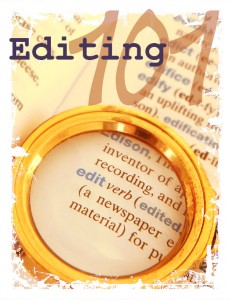 I finished the second draft of Reckless Rescue last Saturday, it’s now down to the hard slog of editing. The edit I just finished was largely a content edit. I added in a lot of new scenes and changed the plot in many others. I feel like I now have the basics of what happens and in what order now.
I finished the second draft of Reckless Rescue last Saturday, it’s now down to the hard slog of editing. The edit I just finished was largely a content edit. I added in a lot of new scenes and changed the plot in many others. I feel like I now have the basics of what happens and in what order now.
Now it’s time to dig deeper. I thought I’d post a series on the steps I take to turn my completed rough draft into a (hopefully) polished final draft over the next few weeks.
Who wants to join me?
I’ll be posting a new editing step each Thursday (though this one is posted on Friday, I know), until I get this manuscript finished! Some steps, of course, will take longer than a week, and some won’t take the full week. So join in at any time, post in the comments about your progress, and we can cheer each other on.
When you mention the word ‘editing’ most people immediately think of lookking for spelling and grammar mistakes. Though that is important, it’s not the step you should begin with. Before you get to grammar and spelling, you need to be sure you have told the story you intended to.
You want to start with the big picture. So that’s where I plan to start.
The One Sentence Summary
One of the ways to find your big picture (or refine it if you already have an idea) is to summarise your novel in one sentence. This can be quite a daunting task.When I first tried it, I just couldn’t come up with anything that was only one sentence! It seemed impossible. I was trying to fit in the main plot, the character storylines, and all the side plots all at once! So I did some research on how other people go about this.
There are many different ways you can write your sentence. The Snowflake method recomends keeping your sentence to 15 words or less. Good in theory (a sentence this short would be great for promoting on twitter!), but I struggle to get one that short. It is also recomended that you use a short description rather than names (in my case, stranded spaceship pilot instead of Tyris, and simple farming woman instead of Marlee), and include the big picture and the more personal issues.
Holly Lisle recomends keeping your sentence under 30 words, which is more manageable. She also suggests including the protagonist, antogonist, setting, and story twist. This gives a bit more of an idea on what to include in the sentence.
This step was really hard for me. I searched for examples of people working through creating their sentences, and couldn’t find much. However, I did find one example of someone discussing the best sentence summary for Star Wars, which was really interesting to read. (If you know of any resources, please let me know in the comments.)
Armed with all this info, I finally sat down and committed a sentence to the screen. My sentence is:
A stranded spaceship captain is determined to rescue a simple farming woman from community pressure to have a baby, but what form will that rescue take?
It’s 26 words, and I think covers most of the main points of the story. I’m pretty happy with it for now.
Part 2 – Character Development, now up.
Have you done a one sentence summary? I’d love to hear your sentences, if you feel like sharing.

Hi Rinelle. Great post. I think this is really hard to do. I’m not yet at the stage where I HAVE to do it, but I have been putting it off anyway because it seems so daunting! Thanks for the tip. On a similar theme, I recently read this useful post giving tips on how to write a synopsis for your novel: http://mikewellsblog.blogspot.co.uk/2011/04/secret-formula-for-creating-short.html
By the way – I think the sentence you came up with is spot on.